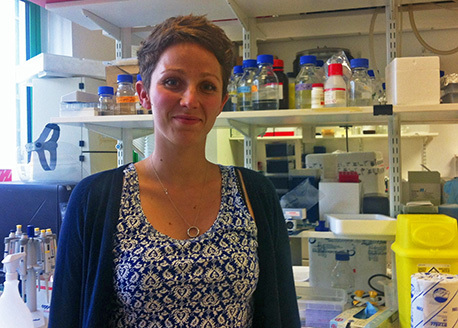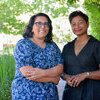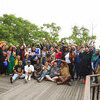Organ engineering essay wins lucidity prize
11 July 2014 | Story by Newsroom
It's been called Frankensteinian and with good reason. There's little doubt that 3D human organ and tissue printing, or bio-printing, will push the frontiers of medical science and ethics. Think biological printer ink where stem cells, or other regenerative cells, are cultured in bio-reactors and layered by the printer to simulate human tissue. The technical challenge is to recreate the vascular systems needed to sustain living tissue.
It's a topic UCT honours graduate (molecular and cell biology) Jestin George tackled head-on in a jargon-free essay that won her the Keswick Prize for Lucidity. Now a research technician at the University College London's Institute of Ophthalmology, George spoke with Helen Swingler about the science '“ and the science of writing.
HS: What was your biggest challenge compiling and writing the essay?
JG: Trying to equip myself with enough substantial knowledge on a topic I was unfamiliar with in the limited time. When researching, I've found that there are often one or two small details that are continuously overlooked, or only briefly commented on across the literature. I often think that perhaps the authors don't completely understand that aspect, or that they feel it's unnecessary to discuss it in detail. This starts to form a gap in your knowledge, something I struggled with, particularly when writing this article. I had to mentally overcome that complacency and actively research the area of microvasculature regarding 3D printed organs. To be honest, it's still something I don't fully understand.
HS: And then you have to translate a complex, technological topic into language that lay people can understand?
JG: One of the biggest challenges was overcoming the obsession we have with equating big words and verbose sentences with intellect. Explaining a complex idea in simple, everyday language does not mean you have dumbed down a concept. It's true that in order to clearly explain a complicated concept, you need to fully understand a lot of the tricky details, but I also believe that not taking a genuine interest in the topic makes it much harder to write about, especially when the reader is of the general public. Consequently, I've found it important to do two things to write for a lay audience: inform myself fully on the topic; and discuss and explain the topic in a casual conversation with a friend. Exercising this skill in the form of casual discussions is hugely helpful in writing for a lay audience.
HS: Do we need this technology?
JG: Patient-to-patient organ transplant surgeries have been successful but they face numerous challenges: overpopulated transplant waiting lists, tissue rejection, and other post-operative complications. Thus the organ engineering and regenerative medicine sciences arose, potentially offering less rejection (by using the patient's own cells) and hopefully overcoming the organ shortage problem. However, these lab-constructed organs remain confined to the area of research, and are deemed unsuitable for actual transplantation for numerous reasons, but mostly due to the highly specific scaffolds they required, making them less than ideal for mass production lines. 3D printing offers the most potential with regard to mass production and adequate vasculature; the highly accurate digital blueprint taken from MRI scans, coupled with the precision of the robotic printing, means that highly specific scaffolds can be done away with.
HS: Creating new organs and human tissue for regenerative purposes sounds a bit Frankensteinian. It must be an ethical minefield.
JG: Most worryingly perhaps is the risk of misuse. Since the CAD files (the blueprints of the organs) are stored digitally, they can be hacked or downloaded by anyone with the know-how. 3D printers are also becoming more and more readily available. This makes regulating and controlling the production line, or more importantly, those operating the production line, more difficult. In the wrong hands, this could lead to unsafe and illegal organs that could be made more cheaply, leading potentially to a black market trade. It could indeed lead to some Frankensteinian-type work, as ill-informed or unscrupulous scientists apply their imaginations to the technology. Finally, 3D printing also encourages the ever increasing "just replace it" attitude and pushes things like good nutrition, healthy lifestyles and preventative medicine into the shadows. For some, there are also religious or spiritual watch points, where the idea of human beings recreating functioning organs, and thus "life", is problematic.
HS: Does writing come naturally?
JG: I greatly enjoy writing about scientific topics. I like taking a collection of facts and interpretations formulated in my head from research I have analysed, and putting them on paper, in my own style. I enjoyed writing essays during university and was sad to see the amount of essay-writing assignments reduced when I gave up my psychology major. I think the sciences could definitely benefit from more essay-based tasks in the undergraduate programmes, not only to improve students' scientific writing skills but also to stimulate their science-related interests.
 This work is licensed under a Creative Commons Attribution-NoDerivatives 4.0 International License.
This work is licensed under a Creative Commons Attribution-NoDerivatives 4.0 International License.
Please view the republishing articles page for more information.










